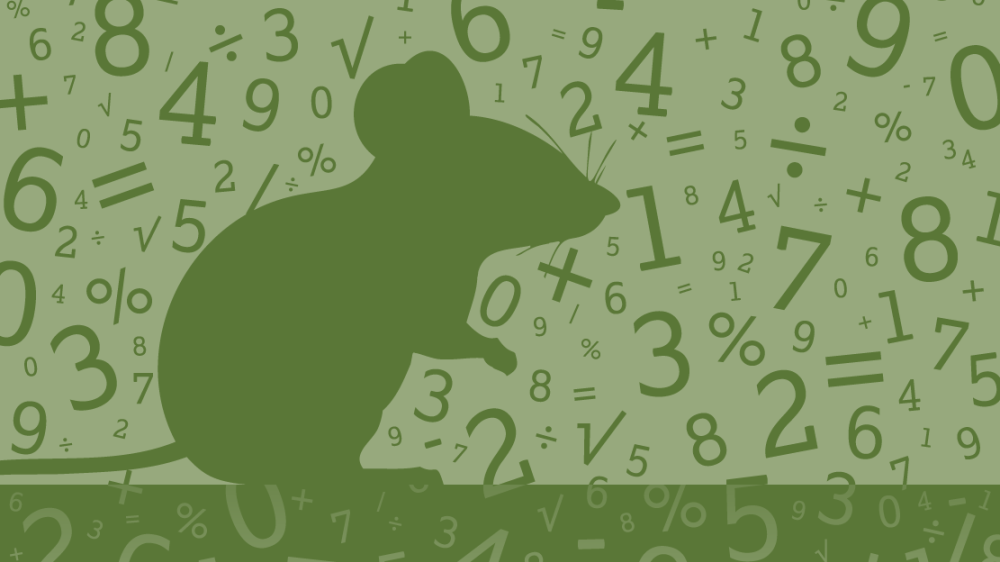How to plan a colony
On this page
Strain breeding characteristics
It is important to know the breeding characteristics of your genetically altered (GA) strain and background strain in order to make the correct decisions for colony management. You should consider the following points:
- Mice from different backgrounds do not all breed in the same way. Some mice breed well if first mated at 18 weeks of age. Some will not breed at all if the first mating is set up after 12 weeks of age.
- Different strains behave differently depending on the type of mating set up. Some strains breed effectively as trios, others need to be set up in pairs.
- Neonate mortality can vary considerably between strains, ranging from 2% in some outbred strains to more than 20% in some commonly used inbred strains.
- Litter size and general fecundity differ between strains and should be considered for the particular GA strain in question. It is worth bearing in mind that for some GA strains, the phenotype is different in males than in females (e.g. males might be infertile, females might be aggressive).
Note that some of these characteristics are also dependent on environmental factors so may not be the same across different facilities. If data on breeding characteristics is not available for a particular GA strain, a good starting point is to use the information for the relevant inbred strain (for examples of reproductive characteristics of common inbred strains see this table from The Jackson Laboratory). However, once breeding starts, in-house data should be captured and assumptions updated. Once these details are known about the GA strain, a breeding strategy should then be modified based on in-house strain data.
Purpose of the colony
Once the breeding characteristics have been established, the breeding strategy will need to be planned based on the purpose of the colony. If a colony is being held but no mice are being produced for experiments, it is recommended to hold the colony as a backcross and using the intermittent breeding strategy (see Worked example of intermittent breeding). Using an intermittent breeding strategy minimises genetic drift and maintains a colony capable of rapidly breeding an experimental cohort.
If breeding is required to produce experimental cohorts, information on the breeding characteristics of the GA strain (as detailed above) and the experimental requirements should be used to calculate the matings required (see below).
Worked example of calculating breeding numbers for an experimental cohort
The experiment requires 10 homozygous females, 10 homozygous males, 10 wild type females and 10 wild type males.
It is recommended to breed this from a heterozygous intercross. This generates the homozygotes and wild types from the same matings and removes any potentially confounding factors that could occur if the homozygotes were bred separately to the wild types (e.g. maternal and paternal effects as a result of the genotype of the parent, maternal environment, feeding and social interactions prior to weaning, handling by different staff in different rooms etc.).
To calculate the number of matings required, account for the following factors:
- The probability of achieving a genotype. This may be based on Mendelian ratios but be aware these ratios may not always be achieved, especially within small cohorts.
- Neonatal mortality – this will be dependent on (sub)strain and facility.
- Average litter size – this will be dependent on (sub)strain and facility.
- Average breeding performance – often a percentage of females will not get pregnant within the required timeframe, this will be dependent on (sub)strain and facility.
Step-by-step calculation for the number of matings needed to generate the required number of animals for an experiment
- Account for the probability of generating the required genotype:
- Number of animals of the rarest required genotype needed for the experiment x Number of pups needed to produce the required genotype* ꞊ Number of viable pups required.
- For example, if 20 homozygous and 20 heterozygous animals are required, the rarest genotype is homozygous as 1 out of 4 pups from a heterozygous intercross are homozygous on average. This means to get 20 homozygous pups 20 x 4 = 80 viable pups are required (which will include sufficient heterozygous pups).
- Account for neonatal mortality:
- (Number of viable pups required ÷ % survival at weaning) x 100 ꞊ Total number of pups required to be born.
- For example, if 80 viable pups are required at weaning and the neonatal mortality of the strain is 18%, then (80 pups ÷ 82%) x 100 = 97.5 pups are required to be born in total.
- Account for average litter size:
- Total number of pups required to be born ÷ Average litter size ꞊ Total number of litters required.
- For example, if 97.5 pups are required to be born in total and the average litter size for the strain is 7.2 pups, then 97.5 ÷ 7.2 = 13.6 litters are required in total.
- Account for breeding productivity:
- (Total number of litters required ÷ % productive matings) x 100 ꞊ Total number of matings.
- For example, if 13.6 litters are required in total and on average for the strain 90% of matings result in pregnancy then (13.6 ÷ 90) x 100 = 15.1 matings are required in total**.
*According to Mendelian ratios
**The final number of matings is rounded up. Therefore, in this example 16 females would be set up in 8 trio matings or 16 paired matings. Bear in mind that about half the time this number of matings will not give the desired number of homozygotes and will not necessarily give the same number of males and females. There should be a contingency plan to use slightly fewer animals or to extend the breeding slightly. This is more relevant when smaller are numbers being bred.
Breeding calculator tools
Researchers from the University of Zurich have published a statistical method [1] for predicting the minimal number of matings required to breed an experimental cohort. This method, which is publicly available in the form of a Breeding Calculator tool web application, optimises breeding design by providing the user with information about the optimal number of matings required to generate desired cohorts whilst accounting for specific strain breeding characteristics and success probability.
This tool includes the option of using pre-defined common background mouse strain fertility and average litter size parameters (based on strain information from The Jackson Laboratory), or these can be entered manually. The option of manually entering the breeding characteristics allows this tool to be used for calculating breedings in other species.
In addition to inputting the number of required animals and the breeding characteristics, the calculator enables the user to define the confidence value (likelihood of successfully obtaining the required number of animals), the sex distribution (one sex only, both sexes or both sexes in equal ratio) and the birth span (the required age span or timeframe that the offspring produced from multiple matings should be born within). The authors demonstrate that using both sexes (with or without a fixed ratio) decreases the number of matings by half compared to using only one sex [1]. Where not scientifically necessary to use only one sex, using both males and females improves the external validity of your experiment, for more information on how to design experiments accounting for both sexes see the FAQs and the EDA Animal characteristics pages. If breeding a cohort of animals in one batch within a strict timeframe is critical and appropriate, the birth span can be specified as one, two or three days, however, this will increase the number of matings required (and animals used) so where a narrow age range or timeframe is not required the birth span value should be set to ‘4 or more’.
For an alternative method to calculate the number of animals required to breed a colony, including planning for ongoing availability of pups over time, see the Breeding Colony Size Planning Worksheet from The Jackson Laboratory.
References
- Milchevskaya V et al. (2023). Group size planning for breedings of gene-modified mice and other organisms following Mendelian inheritance. Lab Animal 52(8): 182-188. doi: 10.1038/s41684-023-01213-1
Web application tool for calculating the minimal number of matings required to breed an experimental cohort, published in Lab Animal.

Breeding colony size planning worksheet from the Jackson Laboratory.

Experimental design guidance

